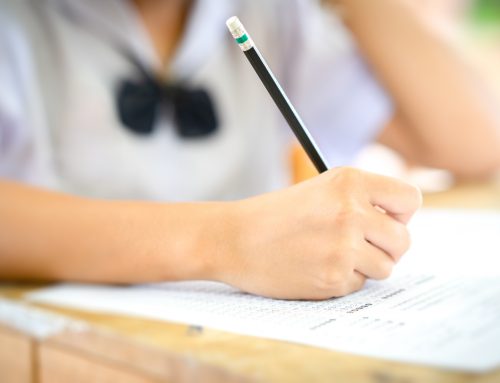In primary school, compositions mainly refer to narrative essays. As long as students master the writing techniques for narrative essays, primary school compositions will be almost a piece of old tackie!
What’s a narrative essay?
The main subject of a piece of narrative writing is usually the protagonist. You’d be required to write a story about the main character and what happened to him or her.
Through the event, it should highlight a particular moral that could be thought-provoking, a commendation, a discouragement, etc. When written correctly, it’ll instantly elevate the essay.
Many students, when tackling compositions in a narrative tone, might end up with a flat, linear account that is accompanied by fragmented description—mistakes like these may result in loss of points.
Here are some of the best insider tips to inspire your child’s next narrative essay.
Objectives of narrative essays
1) Give lucid details about the time, place, people and events.
Fill the reader in on the who, when, where and how it happened.
2) Identify the moral of the incident.
Why are you telling this story? If you have chosen to narrate an incident, take note to take some time to mull over the incident and have a rundown of the incident in your mind so you’d be able to identify why you’re telling this particular story a.k.a. its moral.
8 Tips To Improve Chinese Composition In Primary School
3) State the settings clearly.
All events happen and develop within a certain setting. Was it rainy or sunny? Did it happen in a hospital or on the streets? Was it in the morning or late at night? Having a well-written setting puts the audience right into the story, expresses the writer’s feelings, and most importantly, liven the article without a hitch.
4) Writing the story in chronological order.
To diminish any possibility of disorientation for the readers, it’s always sound to write the story as a sequence of events in which they occurred in time. Compose the narration in which the incident’s cause, process and result are crystal clear—your readers should never need to second guess what you’re trying to put across. Precision is key: the cause and effect and its development should also be explicated.
5) The chronicle should revolve around a focal point.
Elucidate the most significant part of your narrative essay to create a deep impression to the readers; you don’t want readers to forget what was penned in the first half of the composition when they get to the last paragraph.
6) Create strong, impressionable characters.
Characters are (almost) what moulds the story. Students should write about the characters’ language usage, expressions, actions and psychological activities meticulously and vividly—doing so define the character’s ideologies and better portray the moral.
How to describe scenes precisely
To write a good scene, you’d have to pay attention to the following four pointers:
1) Explain the background.
Include the time, place, environment, etc., so that readers will know the kinds of social or natural environment the scene is established from.
For example:
今天放了学以后,同学们一窝蜂冲出了校门,有的学生直奔学校附近的快餐店,有的往图书馆走去,我和几位朋友则一起到了球场准备来场足球比赛。正在踢球的同时,董子健在树旁指着地喊道:“大家快过来看这是什么!”我们逐渐停下动作,互望对方便充斥着好奇心向董子健跑去。
2) Embellish a clearly written outline with details.
When writing the scene, the outline should be prominent to give readers a chance to percept the overall story in their own way. Within the general outline, there should be a featured paragraph, which should be elaborated yet concise.
The Step-By-Step Guide To Write A Good Chinese Composition: Picture Composition For Higher Primary
For example:
“嘀嘀嘀嘀嘀”地铁门打开,小轩随人潮上了地铁。比繁忙时间早半小时的地铁里人并不太多,小轩便找了个空位坐了下来。窗外的风景像幻灯片一样,一眨眼一会儿高楼大厦,一会儿又是油绿绿的一片。他尤其喜欢路途中间出现的空阔草地,瞬间让他回想起小时候父母带着他和弟弟在草原上放风筝的场景,想着也特别舒心。弟弟小小的一个,但能量满满,特别喜欢赤脚在草地上奔跑,一点都不害怕危险,有时不小心摔了一跤,也笑嘻嘻地爬起来,父母担心坏了但都拿他没辙。小轩抬头一看,下一站就到了,拎起背包,准备迎接今天。
3) Talk about the atmosphere.
The atmosphere sets the readers’ emotions in the right path. Whatever the event is, you can always amp the writing with an atmosphere. For instance, if there’s a birthday celebration, the atmosphere is naturally joyous; tension is often associated with a basketball game; sadness comes with departure and so on.
For example:
裁判员一声令下,比赛开始了,运动员们像离弦的箭冲了出去,争先恐后,不分上下。在同学们的助威声中,他们竭尽全力,冲向终点。顿时人生鼎沸,加油声、喝彩声响彻整个操场,特别是快到终点时,欢呼声更是一浪高过一浪。
4) Write chronologically.
Generally speaking, penning a story in the narrative tone means describing various scenes in sequence. The moral of the story can be gradually shaped through these scenes. For example, when describing a Teachers’ Day celebration, you can first write about the joyous atmosphere, then outline the situation, and lastly move on to the principal, teachers, and students. By composing the article in this manner, the moral of the story will eventually be formed.
Such as:
早上路上堵车,爸爸着急地按着喇叭,双手紧握方向盘骂骂咧咧,而我在车后座静静吃着早餐。窗外的雨下个不停,好像是从昨晚就开始下的吧。好不容易过了交通较堵的地段,感觉车辆逐渐行驶得稍微快点了。过不一会儿爸爸望着窗外说:“哎呀,真糟糕,原来车祸呀!下雨开车就要小心点儿呀。” 爸爸从后视镜望着我说:“等你长大后开车一定要观察四周,一定要集中注意力,而且千万不能醉酒驾驶,知道了吗?”刚上小学的我似懂非懂地点了点头。
Conclusion
Here, we’d like to stress that when writing scenes, other than recording an overall description and partial description, you can also utilise spacial description. For example, during a basketball competition, not only can you write about the tension in the court, but you can also write about the boisterous scene within the audience. The combination of both perspectives can set off against each other to achieve a well-written narrative.







